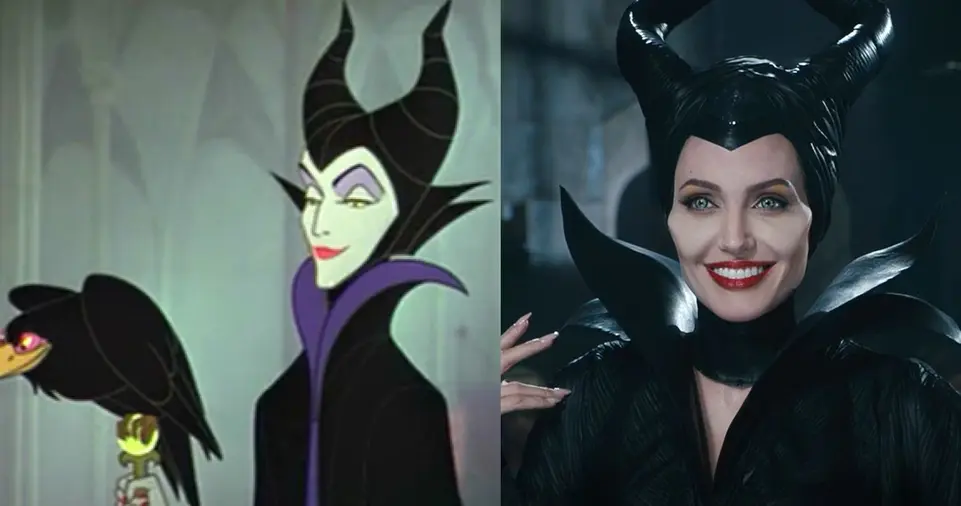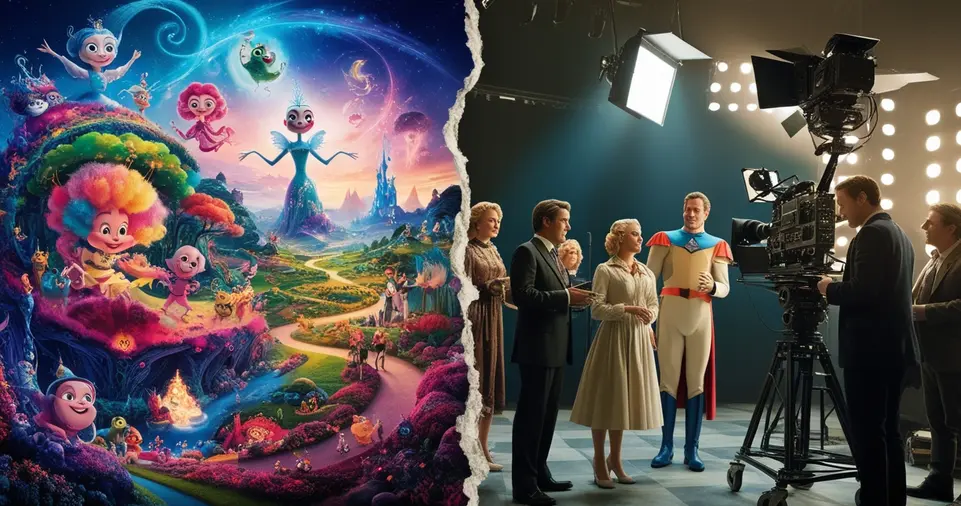Animation and live-action films are two distinct forms of storytelling, each with unique characteristics, challenges, and artistic approaches.
While both aim to captivate audiences through compelling narratives, the techniques, tools, and creative freedom they offer set them apart.
Understanding these differences can help us appreciate the artistry behind each medium and their impact on the entertainment industry.
Key Differences Between Animation and Live-Action Films
| Aspect | Animation | Live-Action Films |
|---|---|---|
| Creation Process | Built frame-by-frame using drawings, CGI, or stop motion. | Captured through cameras in real-world or constructed environments. |
| Artistic Freedom | Allows unlimited creativity—imaginary worlds, exaggerated physics, etc. | Limited by the physical world and practical effects. |
| Cost | High initial cost for pre-production, but controlled post-production. | Costs depend on actors, locations, stunts, and logistics. |
| Time Requirement | Longer production timelines due to detailed design and rendering. | Faster timelines compared to animation, depending on the scale of production. |
| Realism | Focuses on stylized or imaginative visuals. | Rooted in realism, even when augmented with special effects. |
| Acting and Performance | Voice acting and motion capture play a significant role. | Relies on live actors and their on-screen presence. |
ALSO READ: What is Animation? A Simple Introduction to the World of Animation
In-Depth Comparison: Animation vs. Live-Action

Artistic Flexibility and Creative Freedom
Animation offers unparalleled creative freedom. Filmmakers can design fantastical worlds, surreal landscapes, and impossible scenarios that defy the laws of physics.
From talking animals to intergalactic adventures, animation thrives on pushing the boundaries of imagination.
For instance:
- “Spirited Away” by Studio Ghibli transports viewers to a magical realm filled with spirits and mystical beings.
- Pixar’s “Inside Out” visualizes human emotions as characters in a vibrant mental landscape.
Live-action films, while capable of employing CGI and special effects to achieve similar feats, often retain a grounding in reality.
Real actors, physical sets, and practical limitations make certain ideas more challenging or costly to achieve.
Audience Engagement
Both mediums engage audiences in unique ways:
- Animation: Appeals to all age groups. Children connect with colorful visuals and simple narratives, while adults appreciate nuanced storytelling in films like “Zootopia” or “Shrek”.
- Live-Action: Often leans toward realism, making it easier for audiences to empathize with characters and stories. Films like “Schindler’s List” or “The Godfather” thrive on this connection.
Technological Differences
Animation heavily relies on technology like 2D drawing software, 3D modeling, and rendering engines.
Films like “Avatar” blur the lines by integrating CGI with live-action, but pure animation requires tools like:
- Maya or Blender: For 3D modeling.
- Adobe After Effects: For visual effects and animation.
- Toon Boom: Popular for 2D animation.
Live-action films utilize cameras, lighting, and real-world logistics alongside tools for editing and post-production.
Advanced CGI, however, plays an increasingly significant role in creating visuals for live-action blockbusters, such as Marvel movies.
Performance and Acting
In animation, characters’ expressions and movements are created by animators, with voice actors adding personality.
Motion capture bridges the gap by translating real actor movements into animated models. Think of Andy Serkis’s portrayal of Gollum in “The Lord of the Rings.”
Live-action films rely entirely on actors to bring characters to life. Facial expressions, body language, and on-set chemistry add depth and authenticity.
Production Timelines
Animated films generally take longer to produce because of their intricate processes, including:
- Storyboarding
- Character design
- Rendering frames (which can take hours or days per frame)
Live-action films, though quicker to shoot, may face delays due to location availability, weather, or actor schedules.
Advantages of Animation Over Live-Action
| Advantages of Animation | Examples |
|---|---|
| Can depict anything imaginable, defying the laws of nature. | “How to Train Your Dragon” – flying dragons. |
| Strong appeal to global audiences due to universal visual language. | “Minions” transcends language barriers. |
| Longevity – animated characters don’t age. | Mickey Mouse remains timeless. |
| Easier to experiment with abstract or surreal concepts. | “Fantasia” – blends music with imaginative visuals. |
Advantages of Live-Action Over Animation
| Advantages of Live-Action | Examples |
|---|---|
| Realistic portrayal of emotions through human performances. | “Forrest Gump” – emotional depth through Tom Hanks. |
| Shorter production times for smaller-scale projects. | Indie films like “Lady Bird.” |
| Greater relatability due to real-world settings. | “Joker” – urban realism with psychological depth. |
| Practical stunts and physical action feel authentic. | “Mad Max: Fury Road” – known for real stunts. |
Hybrid Approach: Combining Animation and Live-Action

Some films blur the lines between animation and live-action, creating hybrid experiences.
These movies combine real actors and settings with animated characters or effects:
- “Who Framed Roger Rabbit” (1988): A seamless blend of hand-drawn animation with live-action.
- “Avatar” (2009): Live-action performance capture combined with photo-realistic CGI.
- “Space Jam” series: Mixes animated Looney Tunes characters with live basketball players.
Emerging Trends in Animation and Live-Action Films
- Rise of AI and Machine Learning in Animation: AI tools are making animation faster and more accessible. Features like AI-assisted lip-syncing and automated rigging streamline production.
- Virtual Production in Live-Action: Innovations like LED volume screens (as seen in “The Mandalorian”) create immersive environments without physical sets.
- Crossover Appeal: Studios are increasingly targeting diverse age groups. Animated films like “Coco” and live-action remakes like “The Lion King” aim for broad family appeal.
Challenges in Each Medium
Challenges in Animation:
- High initial costs.
- Time-intensive processes.
- Difficulty achieving emotional realism.
Challenges in Live-Action:
- Risk of logistical issues (e.g., bad weather, actor availability).
- Higher dependency on makeup, prosthetics, and stunt doubles for fantasy elements.
ALSO READ: How Animation Brings Stories to Life
Conclusion: Animation and Live-Action Films in Harmony
Both animation and live-action films are powerful storytelling tools, each with strengths and limitations.
Animation’s limitless creativity contrasts with the emotional relatability of live-action, offering audiences diverse experiences.
Whether through vibrant animated adventures or grounded live-action dramas, both mediums enrich our understanding of art, humanity, and imagination.

